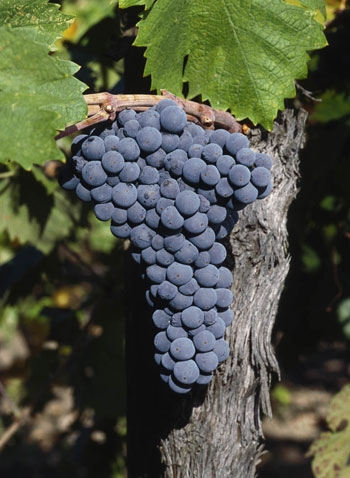UC Blogs
Conservation ag practices highlighted at 'CASI' launch
University of California advisors and specialists, farmers, scientists and agriculture professionals gathered Friday in Clovis to launch a new organization that could potentially save farmers time and money, and reduce their impact on the environment, wrote Robert Rodriguez in the Fresno Bee.
The event marked the establishment of the Conservation Agriculture Systems Institute, which will support research and education efforts to encourage farmers' implementation of conservation agriculture practices.
The Fresno Bee story appeared at the top of the paper's Saturday business page under the headline "UC pushes conservation."
UC Cooperative Extension cropping systems specialist Jeff Mitchell said the U.S. is behind the rest of the world in adopting reduced tillage and conservation practices. But that could change as farmers face increasing regulation.
"We are going to face increased demands to produce more in a way that is less damaging to the environment," Mitchell said. "This is not going to be business as usual anymore. And it's not just about making a profit; it is about optimizing yields and looking at the sustainability of our production methods."
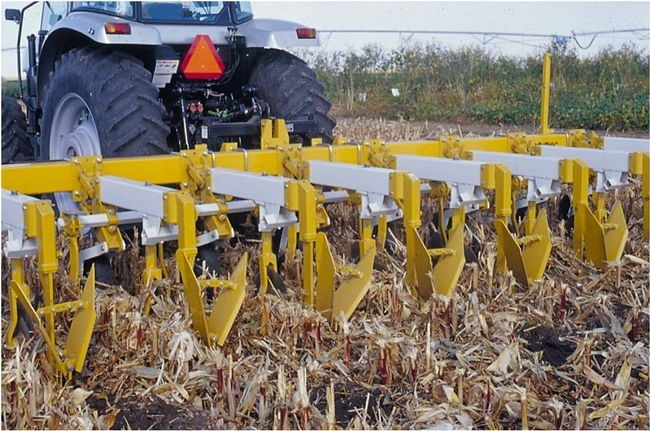
Strip tillage is one example of conservation agriculture.
A 'She Bee' on a Hebe
A "she bee" on a hebe.That has a nice ring to it.It was Jan. 7, an unseasonably warm day for winter and we decided to take advantage of it by driving...
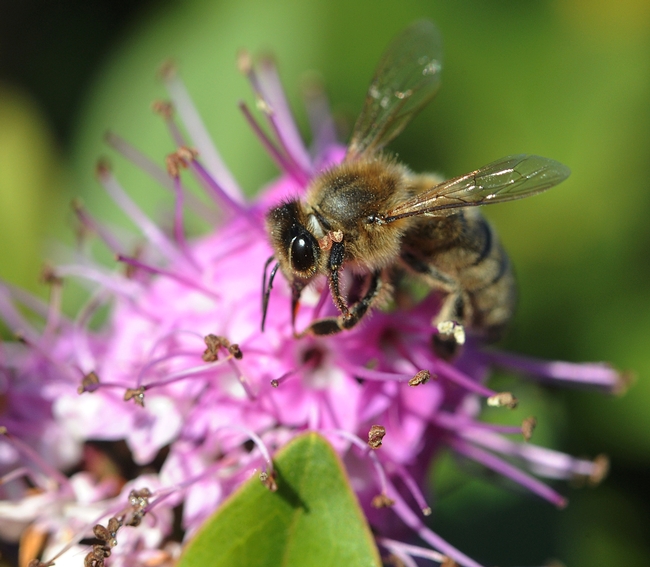
Honey bee foraging on hebe. (Photo by Kathy Keatley Garvey)
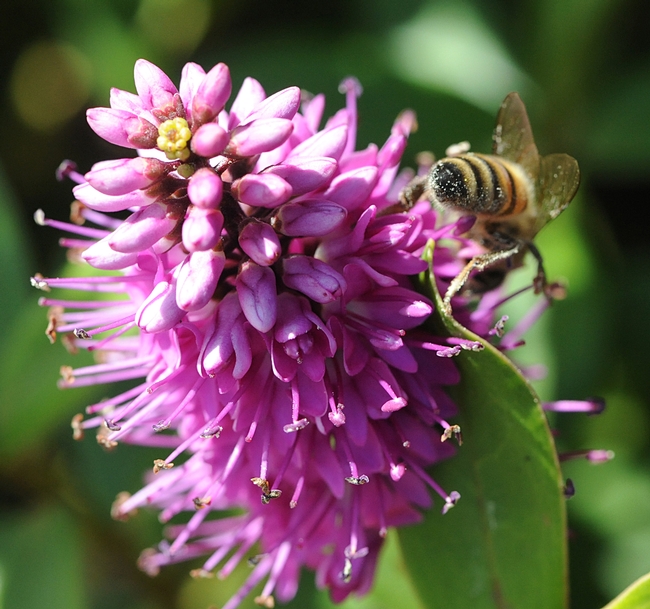
A "she bee" leaving the hebe. (Photo by Kathy Keatley Garvey)
'P' Is for Pollinators
It's good to see the growing number of seminars, lectures and workshops on pollinators.The more we know about our pollinators, the better we'll be...
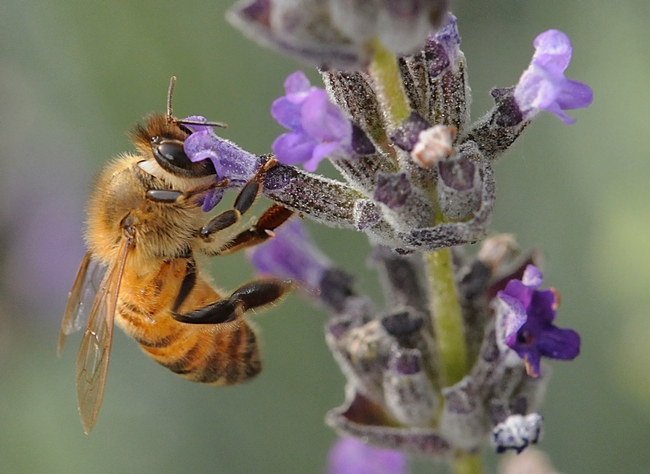
Honey bee foraging on lavender. (Photo by Kathy Keatley Garvey)
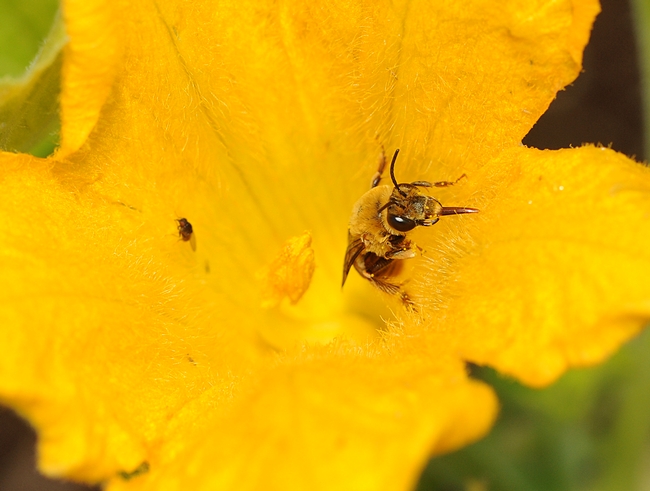
Squash bee (genus Peponapis) on squash. (Photo by Kathy Keatley Garvey)
Salad Bowl
Want an easy project that keeps on giving? How about a salad bowl garden. I saw a very nice example of this easy garden the other day sitting next to my neighbor's front door.
Last October Connie re-purposed a succulent clay pot into a perpetual salad bowl. She
likes mesclun salad greens but not the price. So for a small amount of time and a couple packets of seeds, she created a miniature habitat for growing these garden beauties. Her round clay pot measures about 10 inches across and 4 inches deep. She cleaned her pot and added a mixture of half potting soil and half compost. Fortunately she has a husband who is an active composter, so there is a good supply at hand. She dusted the seeds across the surface and pressed them gently into the soil and misted the surface. She then placed an inverted clear plastic pot liner across the top of the pot to keep the birds out and
to help maintain moisture and heat for the sprouting seeds. She placed her pot in a sunny place in her backyard and since it was still pretty warm in October she checked the moisture level frequently and misted the surface as needed. Within 10 days she was rewarded with tiny shoots of lettuce. When she harvests the lettuce she leaves a couple of inches of growth and the individual plants soon send up new shoots. She reseeded this pot mid-December by gently dimpling the surface with a chopstick and dusting in more seeds. She also moved her pot to the front garden for better sun exposure during the winter. Connie's effort has been rewarded with a nice supply of gourmet greens. The latest Baker Creek Heirloom Seed catalog (http://rareseeds.com/), Renee's Garden (http://reneesgarden.com/) and Peaceful Valley Farm (http://www.groworganic.com/)have a variety of lettuces and greens seeds available for about $3 a packet. Enjoy.
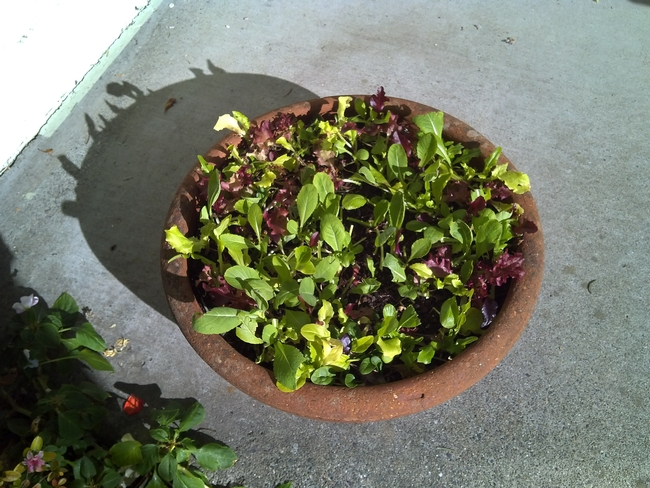
Salad in a bowl. (photo by Trisha Rose)
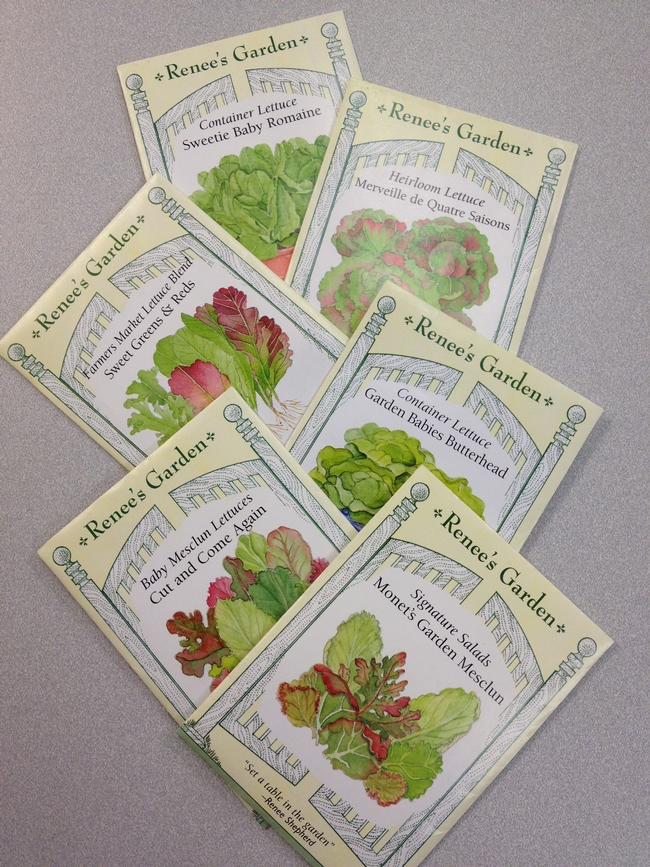
Seeds for a variety of lettuces. (photo by Jennifer Baumbach)
Searching for zinfandel clonal excellence
Wolpert went on a California “safari” to find old-vine selections that had evolved uniquely over time on their own home turf. With support of Association of Zinfandel Advocates & Producers and the American Vineyard Association, UC Davis created the Zinfandel Heritage Vineyard in 1995, the article said, to record, study and preserve distinctive zinfandel clones which they collected from 50 notable old-vine vineyards in 14 counties throughout California. (The Zinfandel Heritage Vineyard website says the vineyard was established in 1989.)
The heritage vineyard helps the industry find answers to some of the mysteries surrounding zinfandel and preserves the special qualities of the old vines for future generations. The vineyard is of historical and viticultural interest, and represents a resource for future plantings of zinfandel with a broad range of selections.


